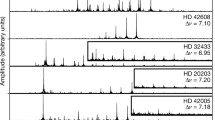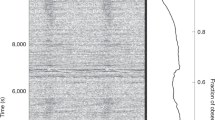Abstract
WE have already1 distinguished between three types of pulsars depending upon their mode of formation. Here we discuss some implications of this classification scheme. We suggest the nomenclature types L, S and D for the three types of pulsars. Type S (S for single) consists of pulsars formed as a result of supernova explosions of single stars. Types D and L refer to pulsars which come from massive close binary systems. Pulsars produced by supernova explosions in and leading to the disruption of the binaries belong to type D (D for disrupted), while the old, rejuvenated neutron stars liberated from binaries by the supernova explosions of the companion stars constitute type L (L for liberated). Type D consists of two subsets; a pulsar belongs to type D1 if its formation, accompanied by the disruption of the binary, is a result of the supernova explosion of the first (originally the more massive) star; to type D2, if a result of the supernova explosion of the second (originally the less massive) star. Thus type D1 pulsars are associated with OB runaways, while type D2 pulsars are associated with type L pulsars.
This is a preview of subscription content, access via your institution
Access options
Subscribe to this journal
Receive 51 print issues and online access
$199.00 per year
only $3.90 per issue
Buy this article
- Purchase on Springer Link
- Instant access to full article PDF
Prices may be subject to local taxes which are calculated during checkout
Similar content being viewed by others
References
Kochhar, R. K. Nature 267, 231 (1977).
Savonije, G. J. & Van den Heuvel, E. P. J. Astrophys. J. 214, L19 (1977).
Kundt, W. Phys. Lett. 57A, 195 (1976).
Kruszewski, A. Adv. Astr. Astrophys. 4, 233 (1966).
Van den Heuvel, E. P. J. Proc. 16th Solvay Conf. 119 (University of Brussels Press, Brussels, 1974).
Gursky, H. & Schreier, E. in Neutron Stars, Black Holes and Binary X-ray Sources (eds Gursky. H. & Ruffini, R.) (Reidel, Dordrecht, 1975).
Backer, D. C. & Sramek, R. A. Astr. J. 81, 430 (1976).
Anderson, B., Lyne, A. G. & Peckham, R. J. Nature 258, 215 (1975).
Author information
Authors and Affiliations
Rights and permissions
About this article
Cite this article
KOCHHAR, R. A classification scheme for pulsars. Nature 270, 38–39 (1977). https://doi.org/10.1038/270038a0
Received:
Accepted:
Issue Date:
DOI: https://doi.org/10.1038/270038a0
This article is cited by
-
Are there real types of radiopulsars?
Astrophysics (1989)
-
Evidence of a disrupted pulsar binary system
Nature (1979)
-
Runaway stars as witnesses to supernova explosions
Nature (1978)
Comments
By submitting a comment you agree to abide by our Terms and Community Guidelines. If you find something abusive or that does not comply with our terms or guidelines please flag it as inappropriate.



